0 引言
1 井间干扰现状
2 干扰对产能影响
2.1 井间干扰程度分析
2.2 数值模拟模型校正
2.3 干扰对EUR影响
表1 数值模拟模型基础参数Table 1 Basic parameter table of numerical simulation model |
| 参数 | 值 | 参数 | 值 | ||
|---|---|---|---|---|---|
| 初始气藏压力/MPa | 78 | 人工裂缝开度/m | 0.005 | ||
| 气藏温度/℃ | 132 | 页岩质量密度/(t/m3) | 2.5 | ||
| 页岩孔隙度/% | 5 | 兰氏体积/(m3/t) | 2.07 | ||
| 原始含水饱和度/% | 35 | 兰氏压力/MPa | 7.3 | ||
| 渗透率 /(10-3 μm2) | 含支撑剂主缝 | 1 800 | 人工裂缝应力敏感系数/MPa-1 | 0.06 | |
| 含支撑剂分支缝 | 0.025 | 水平段长度/m | 1 500 | ||
| 不含支撑剂分支缝 | 0.003 8 | 压裂段数 | 20 | ||
| 基质 | 1.0×10-5 | 窜流系数 | 裂缝发育区 | 3.1×10-6 | |
| 人工裂缝半长/m | 85~171 | 裂缝欠发育区 | 7.6×10-7 | ||
2.3.1 裂缝窜通干扰影响
2.3.2 老井能量亏空干扰影响
图7 300 m井距不同老井累计产气量下新井产量曲线Fig.7 Production curve of new wells under different cumu-lative gas production in old wells with a 300 m well spacing |
3 井距优化研究
3.1 裂缝发育区
图9 不同井距和不同窜通程度模型评价期末预测地层压力分布(a)400 m井距窜通5%;(b)400 m井距窜通15%;(c)400 m井距窜通35%;(d)400 m井距窜通65%;(e)350 m井距窜通5%;(f)350 m井距窜通15%; (g)350 m井距窜通35%;(h)350 m井距窜通65%;(i)300 m井距窜通5%;(j)300 m井距窜通15%;(k)300 m井距窜通35%;(l)300 m井距窜通65% Fig.9 Formation pressure distribution forecast using models with different well spacing and different degrees of breakthrough |
3.2 老井亏空区
图11 不同井距和老井累计产气量下新井EUR变化曲线Fig.11 EUR variation curve of new wells under different well spacing and cumulative production of old wells |
4 实例应用
图13 威荣气田某典型平台井距优化前后井位部署(a) 优化前;(b) 优化后 Fig.13 Well pattern arrangement before and after optimizing the well spacing of a typical platform in Weirong Gas Field |



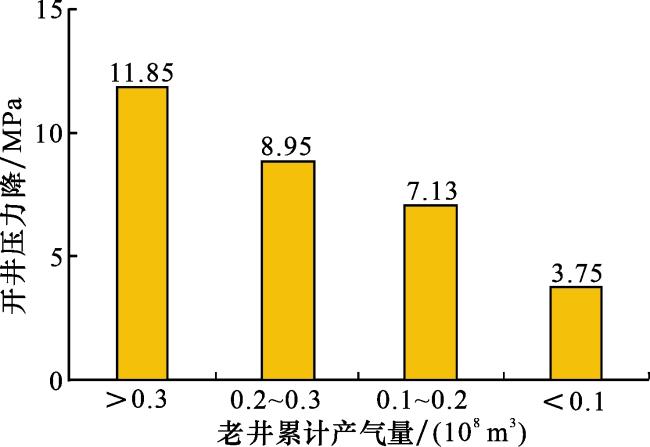
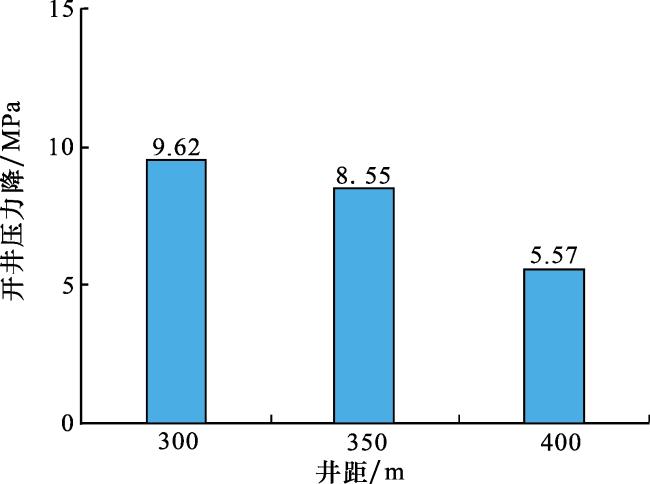
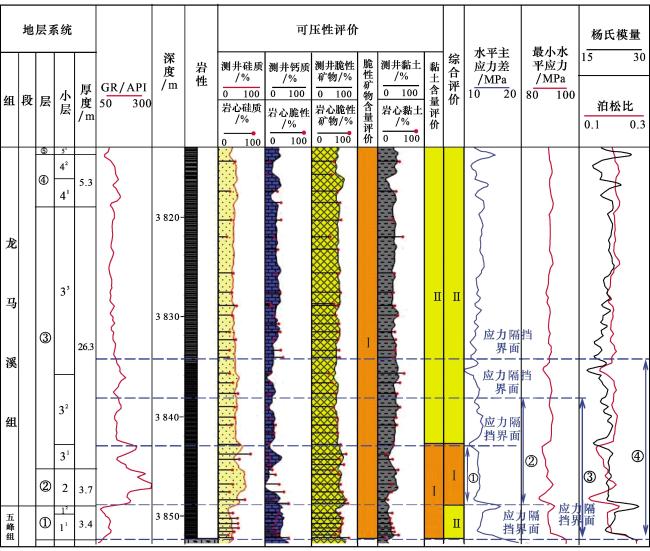
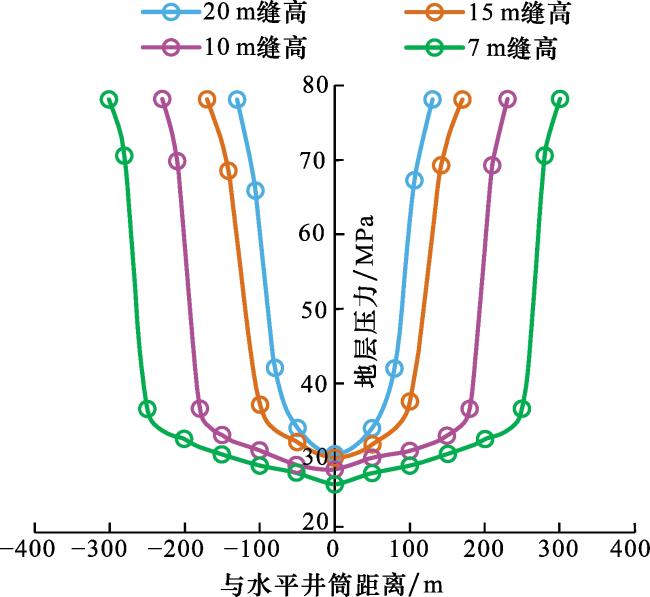
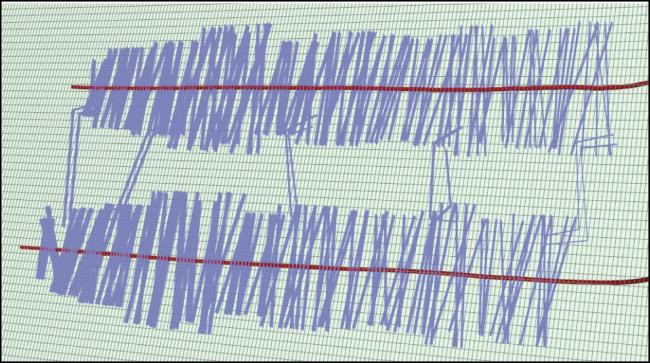
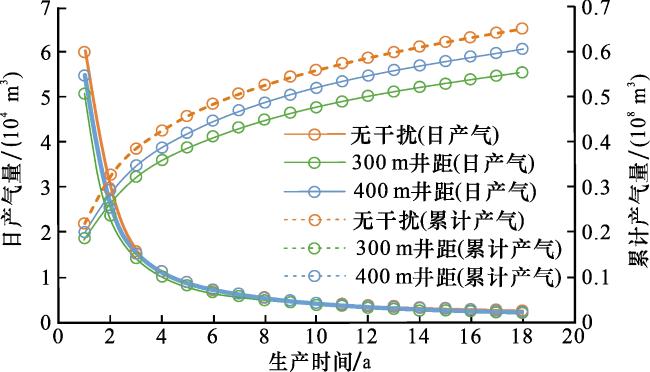
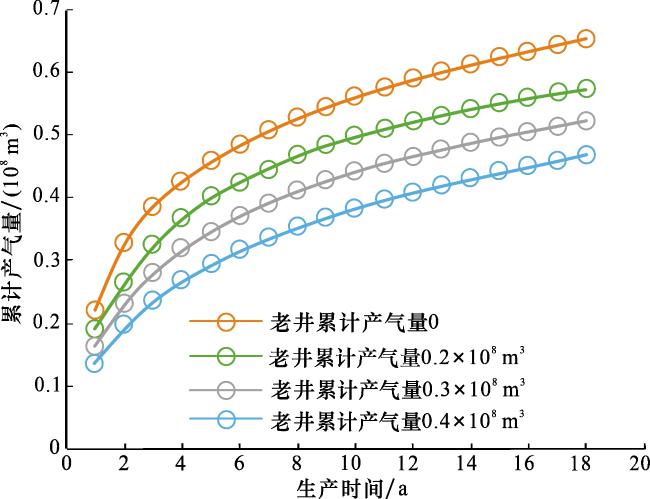
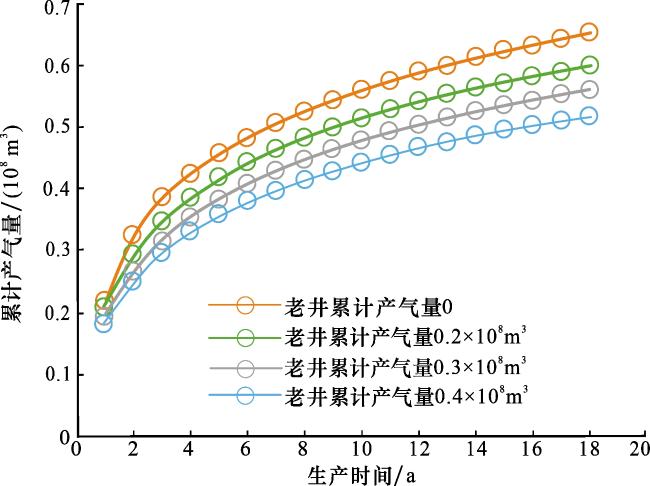
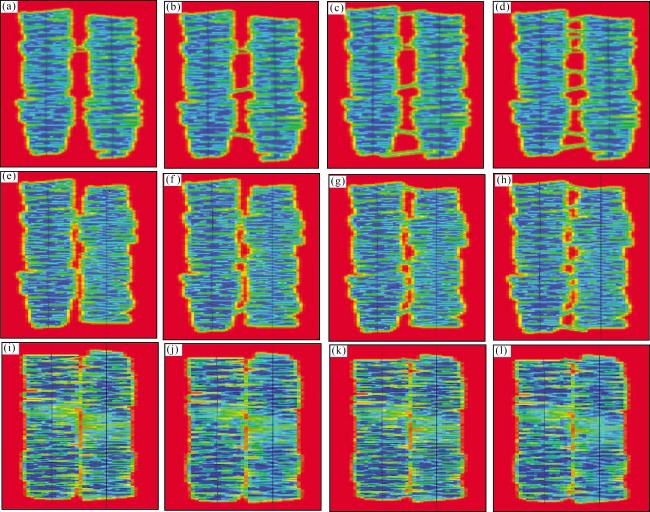
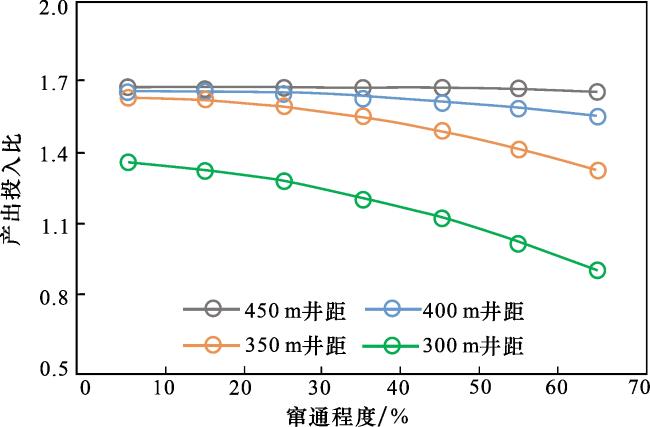
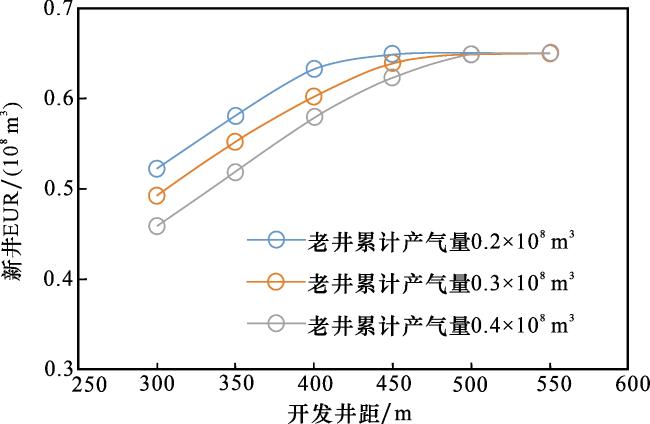


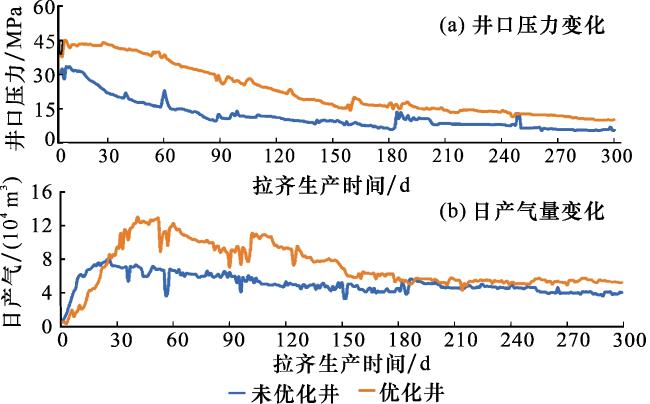
 甘公网安备 62010202000678号
甘公网安备 62010202000678号